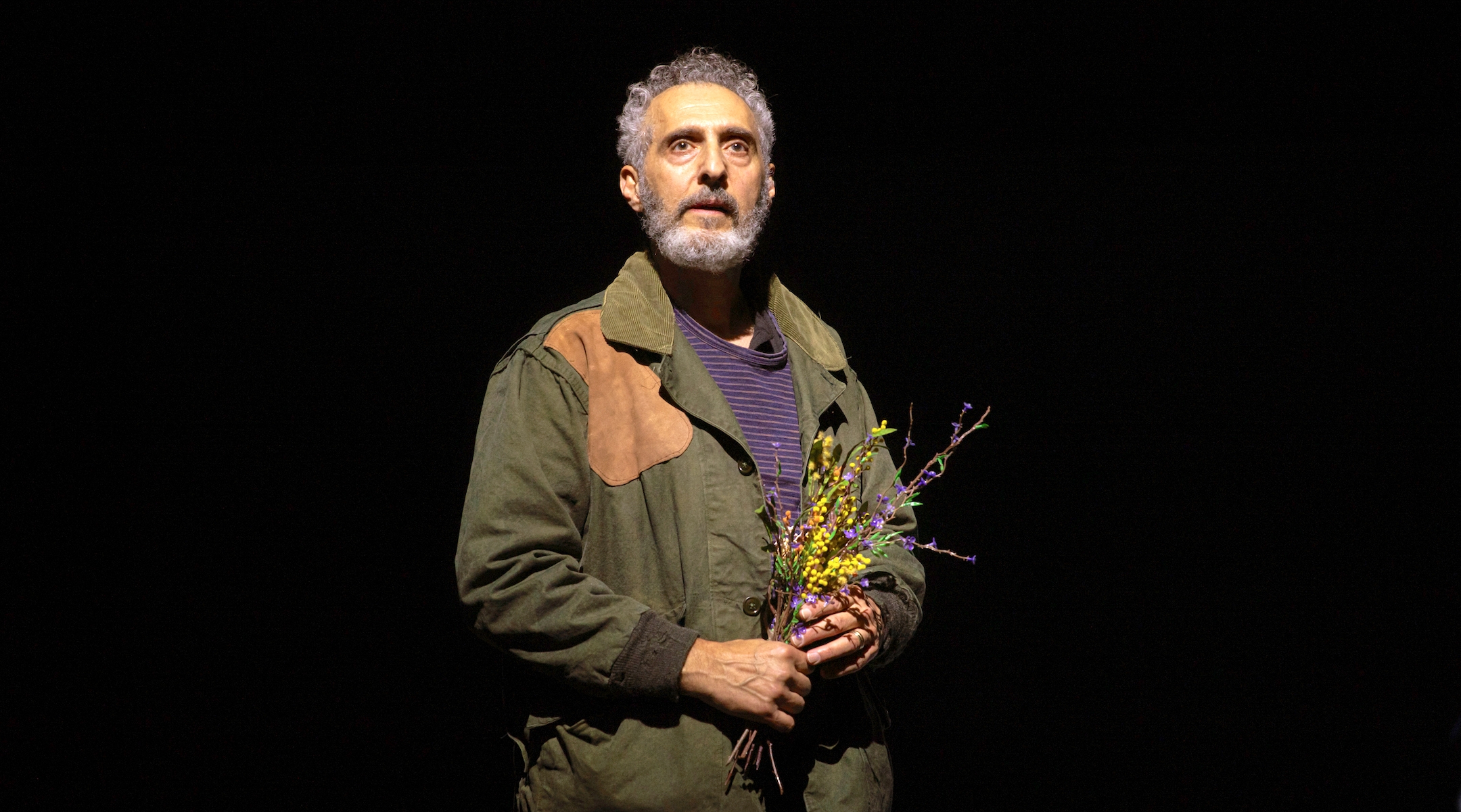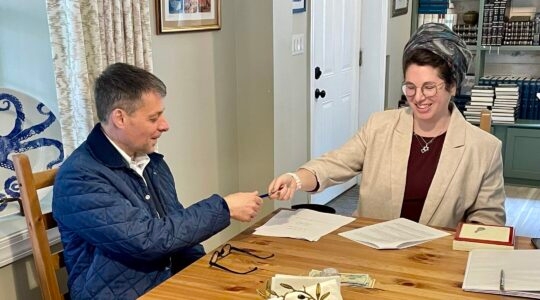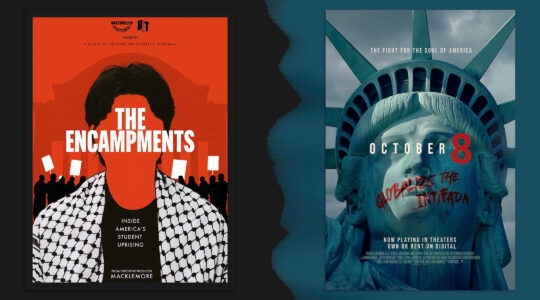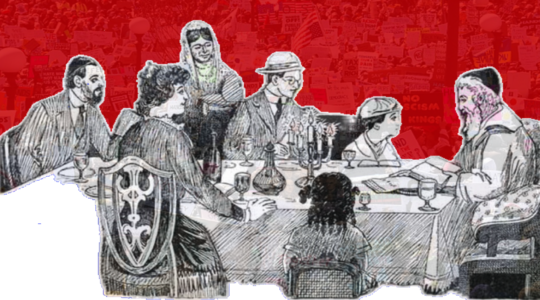(JTA) — A scruffy, bearded Jewish man in his mid-60s — distressed, disheveled but wickedly self-satisfied — is invited to spend the night at the Manhattan apartment of an old friend and benefactor. Put up in the bedroom of the man’s college-age daughter, he slips a pair of her panties over his head and searches her drawers in hopes of finding nude Polaroids.
That’s a scene from Philip Roth’s 1995 novel “Sabbath’s Theater” and now a stage adaptation by the actor John Turturro and the New Yorker writer Ariel Levy. Turturro also stars as Sabbath, a washed-up artist best known for his transgressive puppet theater in the ’60s — and best known to readers, perhaps, as Roth’s most repellant character. Drenched, sometimes literally, in sex, the play begins with a riotous bout of intercourse and climaxes, as it were, with two old lovers remembering their kinks.
But if the book were only about sex it might not have earned its National Book Award. It is also a tender meditation on mourning: Sabbath’s Croatian mistress, Drenka Balich, is dead, as are his mother, his brother and his career. “And there are other kinds of love and loss: about mourning his family and his health and his youth and his virility,” Levy told me when we spoke earlier this week.
As a journalist, Levy often delves into the way sex and gender shape the lives of both celebrities and people on the margins. Her 2017 memoir, “The Rules Do Not Apply,” began life as an award-winning essay on her miscarriage in a hotel room while on assignment in Mongolia, when she was 19 weeks pregnant, and expanded into a rumination on her dissolving marriage and roads not taken.
The New Group’s adaptation of “Sabbath’s Theater” opened Wednesday night and runs through Dec. 17 at the Pershing Square Signature Center in Manhattan. Turturro (who played another Roth character, the craven Rabbi Lionel Bengelsdorf, in the HBO adaptation of “The Plot Against America”) inhabits Mickey’s filthy, seductive charm. Elizabeth Marvel plays Drenka and other women in his life, and Jason Kravits plays the men. The play is as dirty as Mickey’s torn carpenter’s pants, but also poignant: When Sabbath cradles the belongings of his dead brother, lost in battle during World War II, it’s an echo of the violence and loss that have become overwhelming in recent weeks.
Levy and I spoke about adapting a quintessentially Jewish writer like Roth, the appeal of flawed protagonists and how an Italian actor like Turturro captures the Jewish soul of yet another Roth alter ego.
This interview was edited for length and clarity.
With very few exceptions, adaptations of Roth’s work haven’t been all that successful. Do you agree and were thinking about how you might approach the material differently?
Well, I mean, I’d never adapted anything. Adapting Roth properly was like only one of many potentials for crises. Roth is my literary God. I like the way he uses language the most. He might not have liked me saying this because he was obviously very insistent on being an American writer, not a Jewish writer, but nobody captures the rhythm of the language of people whose first language is Yiddish and then move over to English. The way he uses those rhythms, that humor. The cultural familiarity is a powerful addition to my appreciation for his mastery of language and plot, irony and the level of his imagination, the level of his sense of play and his appreciation for what he calls, in ”Sabbath’s Theater,” the “nasty side of existence.”
John Turturro came to you through a recommendation by Hilton Als, a fellow writer at The New Yorker. Tell me about your writing process. What did you both agree on and disagree on — if you disagreed?
Oh, for the first couple of years, we kind of agreed on everything. It was the pandemic so we were going back and forth on Zoom. We had a very, very aligned vision of what the crucial stuff was. You could just tell that certain parts were going to work theatrically and certain parts were not, and then once we started rehearsing, after working on this together for two years and then going on this workshop at the National Theatre in London in January 2023 — once we got through that, we started to have a better sense of what will work theatrically. The unbelievable challenge for John was to be working on his performance and contemplating the script, because every change means a new thing you have to learn [as an actor].
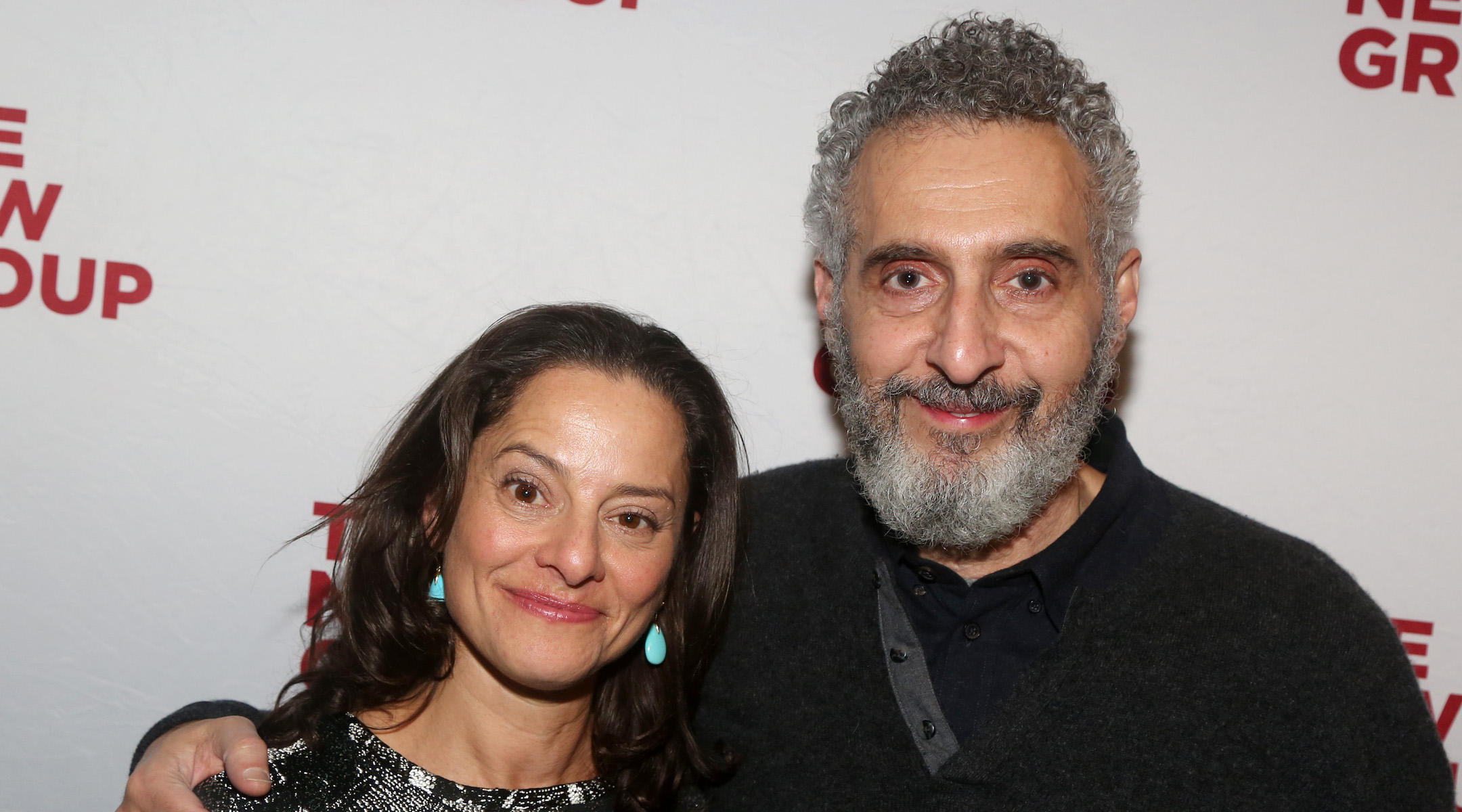
Ariel Levy and John Turturro at the opening night party for The New Group Theater’s new play “Sabbath’s Theater,” at Green Fig Urban Eatery in New York City, Nov. 1, 2023. (Bruce Glikas/Getty Images)
How does a journalist learn to be a playwright? Was there anyone you were taking clues from about how to do this?
I was extremely worried and insecure about it. John knew I’d never written a play. He could have found plenty of playwrights who would have done this, but the way I’ve heard him explain it is that he didn’t want someone who’s gonna come in and say, “I know how to write a play. I’m going to rewrite this.” He wanted to use Roth’s language. We’re barely going to write stage directions, the stage directions are largely lifted from Roth’s writing. The most important thing to John was finding somebody who was Roth-reverent, and then also we just hit it off, we just liked each other. We liked the same parts of the book, and we both felt the book was a love story.
So, how did I learn to do it? I figured out that storytelling is storytelling. And also, I had John guiding me, John knows what a play is, and I had [the director] Jo Bonney guiding me through the process once we were in rehearsal.
You talked about your affinity for Roth. Was there something about “Sabbath’s Theater” that particularly connected to the things you’ve always been writing about and thinking about?
I’ve written a fair amount about the fundamental human drives for domesticity and comfort and kinship and security on the one hand, and adventure and novelty and stimulation on the other — those conflicting poles that human beings stretch between. And that’s very much in there in the realm of Sabbath. And John and I both cared a lot about the depiction of grief and the way the dead can become more real for you than the living sometimes and how, as you age, the accretion of missing people in your life just starts to pile up.
And then there is thinking about — not just sex, but the body. “Sabbath’s Theater” has so many amazing meditations on what it is to live inside a human body. I think we’re both really interested in all of that and the kind of animal reality of being a human who’s alive versus dead.
Were you worried at any point that some of Mickey’s transgressions — he has been tossed from a teaching job at a university after a phone-sex scandal with a student, he visits an old friend and rifles the dresser drawers of his host’s teenage daughter — would make him unredeemable in a post-#MeToo era? And on the flip side, do you feel the play is pushing back against the #MeToo orthodoxy in some way?
I think that, you know, we didn’t put in every transgression from the book, but we put a lot. There’s a beautiful Garth Greenwell essay in The Yale Review about the book where he talks about how he teaches “Sabbath’s Theater” to undergraduates, and it bothers him when the question becomes whether a protagonist should be an example of moral rectitude. That’s not what art is for. This isn’t meant to be propaganda. This is raw. This is art. In some of my favorite literature of the 20th century, the moral compass, the moral core of the whole thing is reminding us that a human being is more than their worst or most repellent urges and behaviors. A human being contains multitudes. This is Mickey in all his humanity, and we certainly didn’t want to sanitize him. I mean, I think the play is still plenty, plenty dirty.
I’m going to quote your own words to you. I was rereading a profile you wrote about the film director Nicole Holofcener, and you say something about her that made me think, “Oh, this is why Levy wrote ‘Sabbath’s Theater.’” You wrote: “This is the kind of creature Nicole Holofcener is drawn to: weirdly alluring, mangled by life, and unable to resist lashing out against her own best interests.”
That’s so funny. Yeah, that’s it, isn’t it? That’s Mickey Sabbath. That’s eerie. That is Mickey Sabbath.
I have to ask you to weigh in on what I think is the world’s most boring debate, which is whether a non-Jewish actor like John Turturro should be playing a Jewish character like Mickey Sabbath written by a Jewish author like Philip Roth. Do you have any qualms about that?
I feel so culturally connected to John Turturro. I wouldn’t be a bit surprised if we had genetic overlap. I mean, it’s like the food’s different, and the accents are different, but it’s the same shit, you know? John in particular to me is very culturally recognizable. And, you know, he’s married to a Jewish person. He’s raising children with a Jewish person. He’s steeped in it. We are not an exotic.
Also, he’s an actor. It’s like a novelist, which I’m not: They can inhabit other realities. That’s what their job is.
I sometimes feel that the readership for Roth is a men’s club. I’ve rarely come across women who idolized him the way I did. Do you feel that?
I mean, until his mature period, [his] women weren’t as interesting. They didn’t come off the page the way the men did. So I can understand, you know, it’s a drag reading a novel where the women aren’t coming off the page. It doesn’t feel great. But then everything changes: When he grows up he becomes this incredibly sophisticated, nuanced writer who realizes that women are half the human race. “Sabbath’s Theater” is the work that preceded the American trilogy [“American Pastoral,” “I Married a Communist” and “The Human Stain”]. That’s when everything starts to become like a masterpiece, and that’s when the women get really interesting. I defy anyone to find a richer, more complicated and fascinating and alluring female lead than Drenka. I mean, she’s unbeatable.
The New York Jewish Week brings you the stories behind the headlines, keeping you connected to Jewish life in New York. Help sustain the reporting you trust by donating today.

